Bomb cyclone wreaks havoc on Washington residents as driver is hospitalized by falling tree and hundreds of thousands are left without power
A bomb cyclone caused widespread damage as it tore through Washington on Tuesday, hospitalizing one person and leaving hundreds of thousands of residents without power.
The cyclone, which is being called a “once in a decade” event, is currently 300 miles off the coast of Washington but reached the state around 7 p.m. PT.
Wind gusts reached more than 70 miles per hour overnight, downing trees and power lines in Seattle, blocking several major roads and crashing into homes and vehicles.
“Trees are falling and falling on homes all over the city,” Bellevue Fire residents warned.
‘If you can, go to the lowest floor and stay away from windows. Don’t go outside if you can avoid it.’
The Seattle Fire Department responded to reports that a tree crashed through the windshield of a car late Tuesday night, trapping the driver in the vehicle.
First responders were able to free the patient, who was rushed to a nearby hospital and is in stable condition.
In the aftermath of the cyclone, downed power lines caused more than 700,000 residents to lose power, but electricity was restored to about 130,000 customers as of 8:40 a.m. PT on Wednesday, according to poweroutage.us.
Washington residents experienced major power outages on Tuesday after a bomb cyclone downed trees and power lines (pictured) in the western part of the state
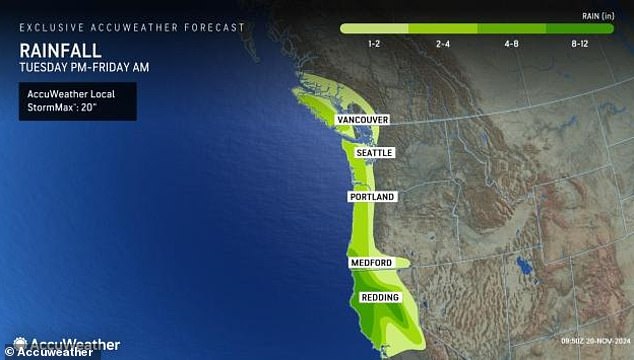
AccuWeather meteorologists forecast that the area will continue to experience strong winds and rainfall of up to 50 centimeters through the end of the week.
“There are so many trees and power lines down that we would post locations until the lights come on,” Snohomish Regional Fire & Rescue wrote on X.
The National Oceanic and Atmospheric Administration (NOAA) reported that the outages affected radio broadcasts at its Seattle office around 10:30 p.m. PT and that the agency said it had “no estimate of when they will be back on the air.”
It remains unclear when power will be fully restored to Washington residents.
Western Oregon also felt the impact of the bomb cyclone, with wind gusts of 30 to 50 miles per hour, while parts of Northern California experienced gusts of up to 80 miles per hour.
The bomb cyclone was fueled by a low-pressure center caused by an atmospheric river that propelled its development in just a few hours.
An atmospheric river is a long stream of moisture in the atmosphere that carries large amounts of water vapor and can produce extreme amounts of snow or rain as it moves over land.
AccuWeather meteorologists forecast that the Washington region will continue to see heavy rainfall of up to 20 inches through Friday.
Dangerous wind gusts are expected to continue through Wednesday evening and will bring heavy rainfall to parts of the state and Northern California throughout the week.
A buoy off the coast of Vancouver Island recorded wind gusts of more than 100 miles per hour on Tuesday evening, while the Oregon National Weather Service (NWS) also reported that this storm was the most intense ever recorded in that area of the Pacific Ocean.
The storm’s central air pressure reached 943 millibars on Tuesday, equivalent to that of a Category 4 hurricane.
However, it earned the designation of a bomb cyclone because it strengthened to about 24 millibars in less than 24 hours.
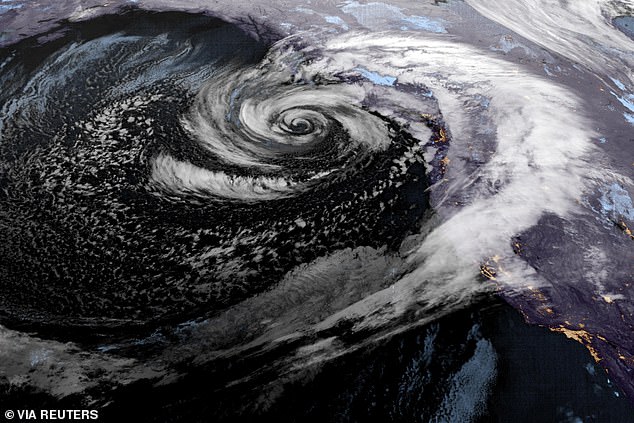
The bomb cyclone is expected to continue bringing heavy rainfall and strong winds to Washington, California and Oregon through the end of the week.
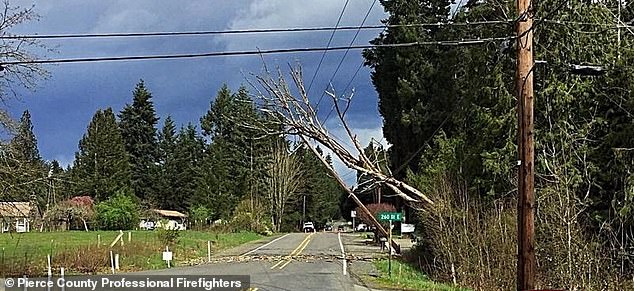
More than 700,000 people were without power when the bomb cyclone hit
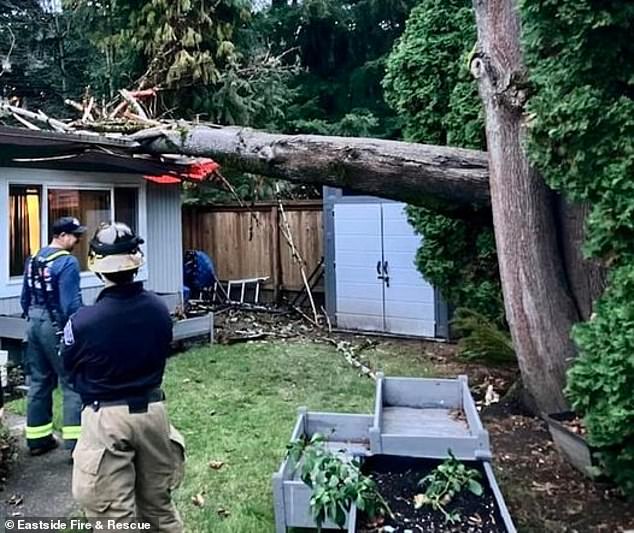
Trees crashed through houses (pictured) leaving a woman dead after landing on a homeless camp
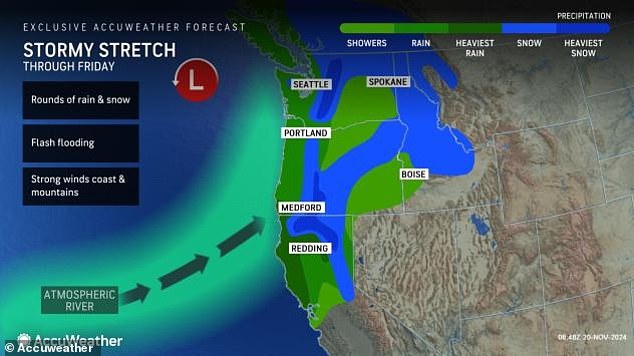
The bomb cyclone accelerated to winds of more than 100 miles per hour in the Pacific Ocean, propelled by an atmospheric river that helped it form within 24 hours.
Meteorologists reported the storm will lead to flooding as it will bring one to five inches of rain to western Oregon and Washington within four days.
Dangerous rockslides and debris flows are also expected to hit the area over the next week, according to the NWS Weather Prediction Center.
A winter storm watch has also been issued for the northern Sierra Nevada, which could see up to 18 inches of snow and wind gusts of more than 75 miles per hour in mountainous areas.
People took to social media to document the effects of the bomb cyclone, with one X user posting: ‘Holy sh** it’s bad outside.
“I went outside to check things out as the rain let up. Now the wind shifted and became stronger.”
Another wrote: ‘Well… a giant tree just ripped out its roots and ended up in my garden. Very lucky with where it fell. Any other direction or a few meters further and it would have been very, very bad.”
